I first came into contact with triggerfish in the Seychelles in the early 2000s. At that time, most saltwater operations concentrated on bonefish, but a number of enterprising guides were beginning to target triggers on a fly and realise the value that they represented as a gamefish. Having spent much of my saltwater career fishing in the Caribbean to this point, bonefish and permit had really been my focus. I distinctly remember wading across a flat with my guide when suddenly that first orange spade with a line through it had started waving at me. I was about to move on, still scanning for bonefish, when the guide put a hand out to stop me and pointed.
‘Trigger!’ At first was I confused, but then realised he was indicating the waving tail.
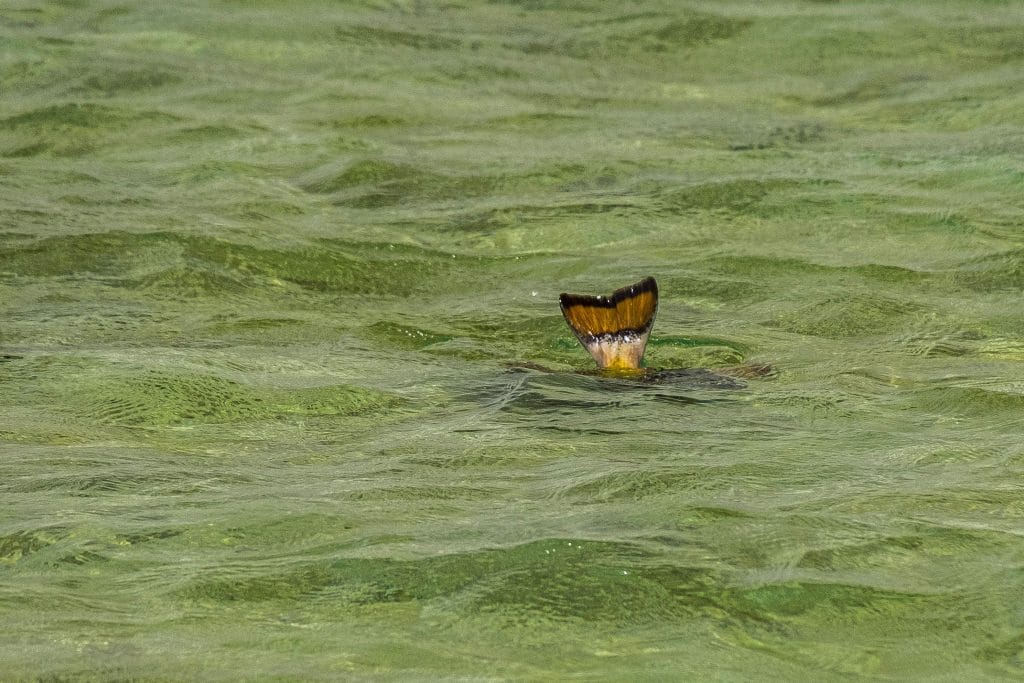
In my naivety I asked what it was and he reaffirmed, a Titan triggerfish. I actually had no idea what it looked like, or even if they took flies. Little did I know another species obsession was about to be born. The guide switched out my leader to some 20lb and tied a small crab fly on the end. The fish was slowly feeding in and around a small white hole on the edge of a flat, happily tailing as it went. I found the movement of the tail rather mesmerising – it seemed to flop around without much purpose as the trigger rolled in the gentle current of the incoming tide. By direction I dropped the crab into the white hole and let it sink. Once it had touched the bottom I gave it one short strip and stopped. The puff of sand was enough to attract the attention of the Titan and it came scurrying over to investigate. I gave a slow pull and felt the nip nip as it tried to pin the fly to the sand. On the next strip about half way through everything went tight and I slowly lifted the rode while simultaneously giving the hook a short strip set. The fish charged off and I remember marvelling at the power in such a small fish.
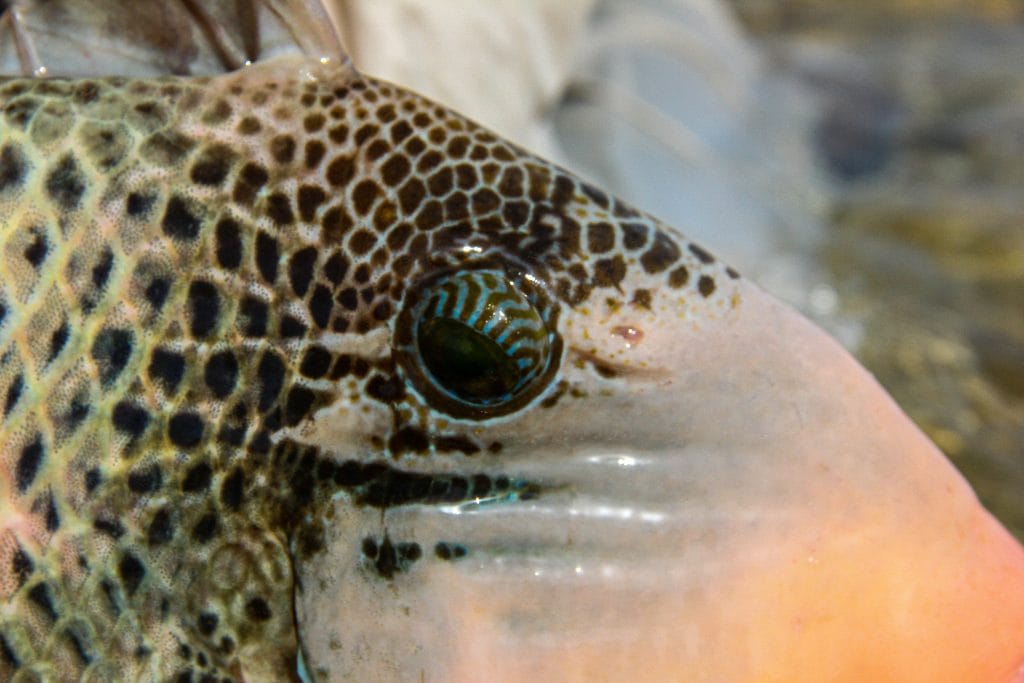
Triggerfish are, in my opinion, one of the most underrated fish to target on fly. If GTs are the Bulldogs of the flats then triggers have to be the Jack Russells. Small, pugnacious, with ideas far above their station, even GTs will steer clear of them in case they are damaged. They have no qualms about attacking much bigger fish and if you speak to any diver they are a fish that need to be respected, especially when protecting their territory or nests. This particular trigger was heading rapidly for the drop and I knew if he hit the razor sharp coral there the game would be over in short order. I leaned on him sideways applying pressure and finally managed to put a stop to the powerful run and bring him under control. Shortly afterwards I was cradling my first trigger, and what a weird looking fish it was!
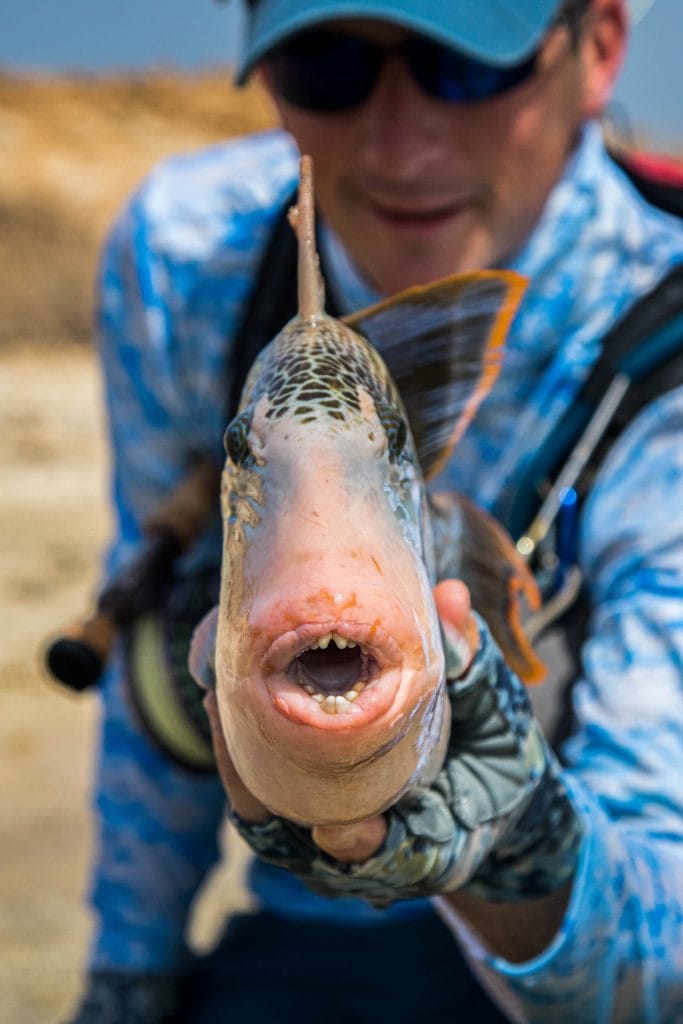
Although fishing for them follows a pattern, each interaction with a triggerfish is unique. Never was there a fish with such independent character. Fly fishing for them is a technical challenge akin to permit, but they are far more attainable due to their more aggressive nature. If they notice you on the flats they are often not afraid and have been known to come and check you out if you are encroaching on their territory. To catch one you have to select the right fly, present it correctly and find the right water and tidal height to see them. Then actually hooking it presents its own challenge with that mouth full of teeth. Lastly, if you hook one, they have nasty habit of scurrying off into a coral hole as fast as they can and either cutting you off or refusing to come out. For the uninitiated this can happen before they even realise they have hooked it. Some days they absolutely hammer flies and then other days nothing you try works. It’s this challenge and frustration that, like permit, make them such a fascinating species to fly fish for.
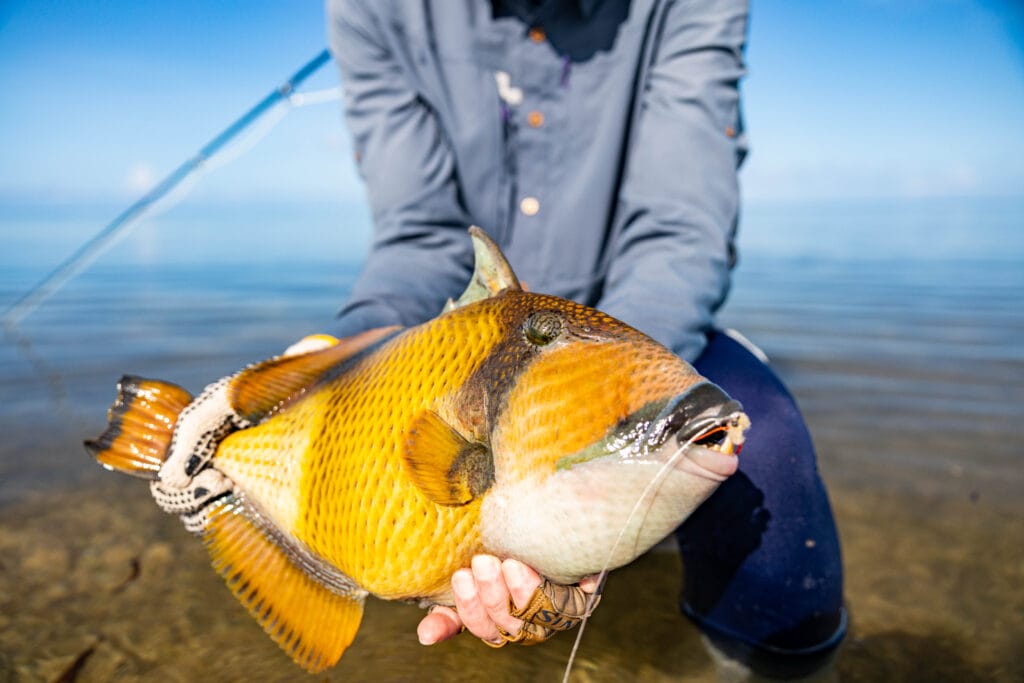
There are essentially four species of triggerfish from the Bilistidae family that we target on fly as although there are many more, most inhabit deep water. On the flats we find the Titan (also known as moustache or giant), yellow margin (also known as peach face), Picasso and the grey. The Picasso is very small, a palm sized one being a trophy. Generally in the Pacific and Indian Ocean we are targeting the Titan and yellow margin and in the Caribbean the not so colourful grey triggerfish. The grey triggerfish is really only just beginning to be targeted.
Aside from their bright and colourful markings, triggerfish are defined by their incredibly powerful and almost human looking teeth secured to incredibly powerful mandibles that make up a large proportion of their body. It uses these hydraulics to quite literally bite coral, revealing prey underneath. You therefore do not want to get your fingers or peripherals anywhere near these snapping jaws for fear of losing digits. Almost as bizarre as it’s toothy maw are the counter rotational eyes, similar to a chameleon that can swivel and look in different directions simultaneously.
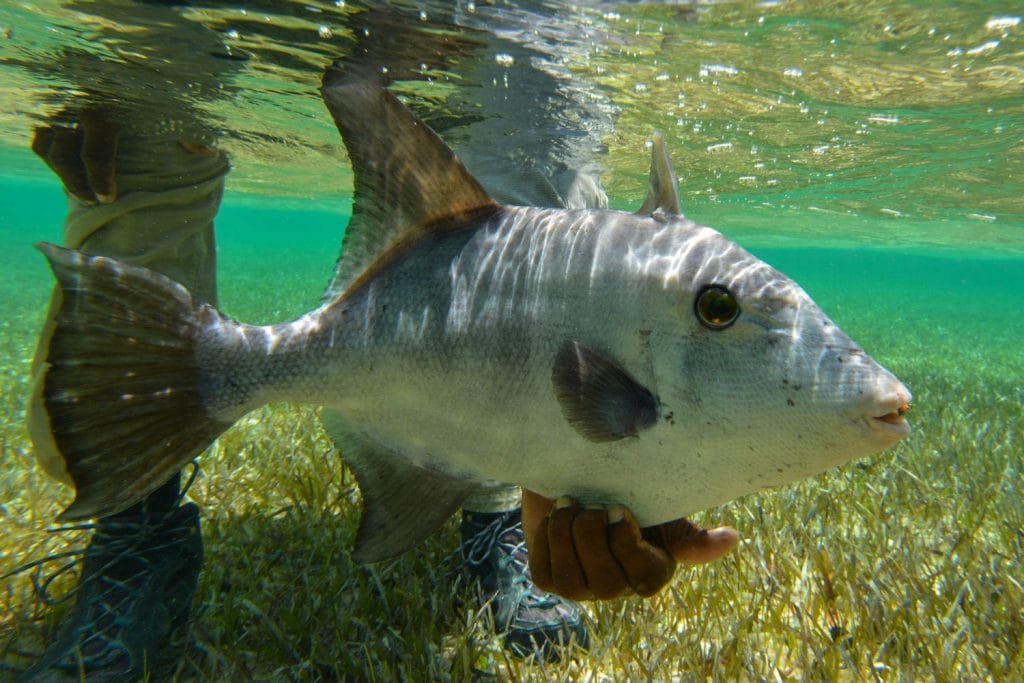
Next is the trade mark trigger in the dorsal that the fish can lock in place. This mechanism can make prying them out of coral holes particularly difficult. Although the colourings of each species are very different, it is their tails that makes them so distinctive on the flats as they hunt. The Titan has a large orange tail with a black band across it and a flat spade end. The yellow margin has a crescent shaped tail outlined with yellow, and the grey – grey.. although sometimes it looks like a small black flag. The Picasso is too small to tail and is normally found in very skinny coral areas. To find tailing triggers you need to be in the right depth of water. In most reef systems they feed actively in that short window as the tide starts to push allowing them access to the rich feeding grounds along the edges of the flats. They are particularly fond, it seems, of areas that have white holes and broken coral that they can hunt around but bolt into if they are alarmed, or the reef edge itself. The opportunity to fish tailing fish can therefore be short as they are harder to find once the water reaches a certain depth. On the whole they won’t make their way further up onto the flats like bonefish and permit, instead preferring to remain near the coral edges. This is by no means always the case and sometimes they will appear in odd places or chasing one another when encroaching on territory.
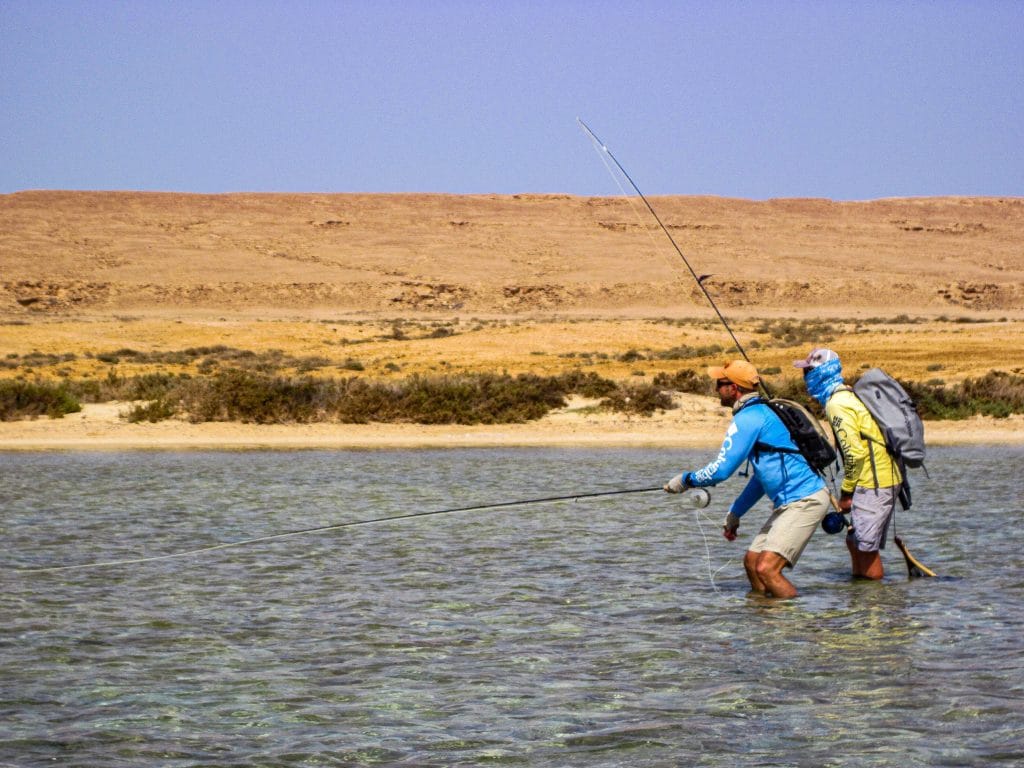
Once you have spotted your tailing trigger what is the method of attack? To target triggerfish a 9# set up is the best, although in some instances you might get away with an 8#. The 9# is the perfect blend of lightness of presentation combined with the backbone to be able to apply pressure if the fish heads for the reef edge or a large coral head and you don’t fancy swimming to pry him free. Fly choices vary depending on the bottom you are fishing on, but my normal go to are shrimp patterns such as itchy triggers, EP spawning shrimps and small crabs such as Gumby crabs in deeper water. They need to be fairly light to give a gentle presentation and a good hook is vital. The itchy trigger is tied on a thicker wire hook and survives well. Weed guards are essential due to the nature of where you are fishing and they help avoid much frustration. Leader wise 16 – 20lb tapered leaders of 12‘ in length ideally. 9’ is a bit short, and 15’ can become tricky to manage with a shrimp, especially at close range.
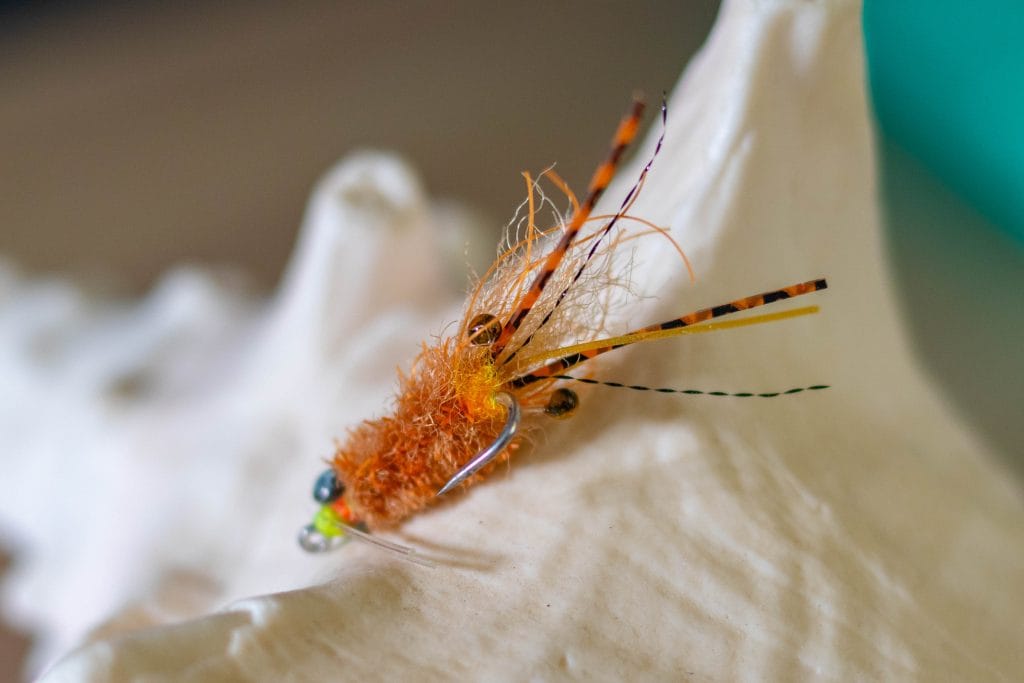
You must approach stealthily as triggerfish are alerted to your presence by crunching coral and pushing water from your legs. Tread as lightly as possible. It’s that fine line between being close enough for a comfortable and accurate shot, but far enough away that you won’t spook it. Like permit, your first cast needs to be your best, so gauge the distance by casting in another direction before you cast at the triggerfish. Some days they seem very skittish, others totally emboldened.
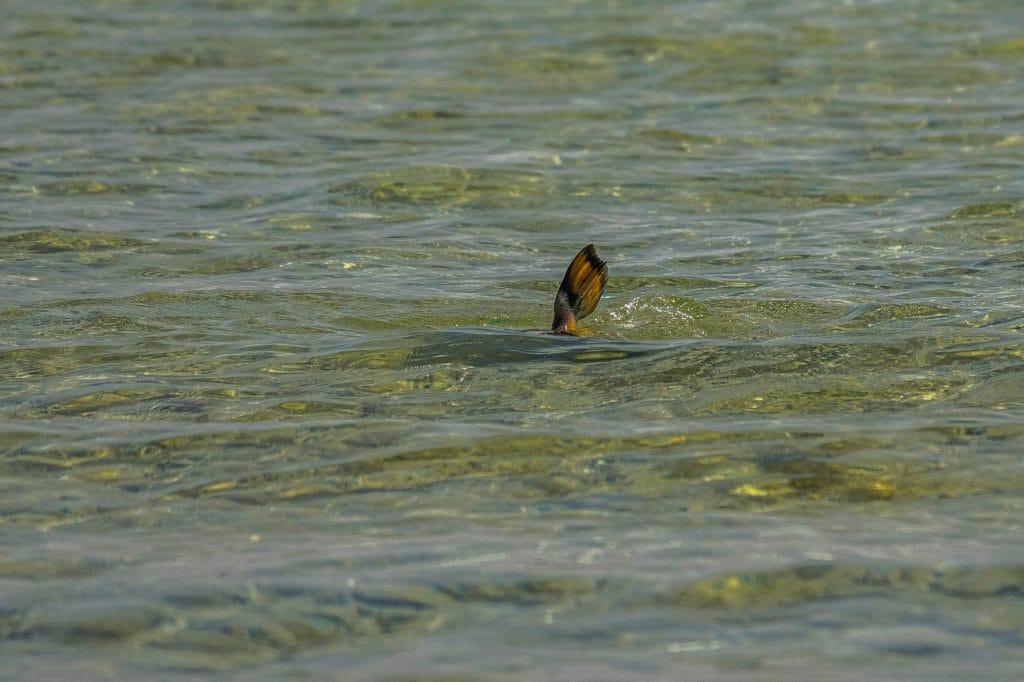
Once you are in position wait for the tail to come up before you make your cast. Not only will this give you an exact position, but also with its face buried in the flat the fish is less likely to become aware of your presence. You need to deliver the fly as close to its head as you dare and ahead of the direction it is facing. I know this sounds obvious, but when they are tailing they often roll around in the current and it can be very frustrating as they change direction just as you drop the fly. If the fish does not see the fly drop then wait until the fly has sunk and the tail goes down before giving a long slow strip. This is normally enough for him to see the escaping crustacean and come rushing over to hit it. As soon as it comes over and tails on the fly the fish is trying to eat it so you need to give a short sharp strip strike. The issue arises in trying to find a hook hold in that toothy mouth, so if you don’t go tight the fly will pop out. The big difference with a trigger and a bonefish or a permit is that a triggerfish will continue to try and eat the fly, where as other species will abort quite quickly. This prolonged game of cat and mouse can go on four or five times, sometime even to the rod tip which is why it is so exciting.
Continue with the slow draw and as soon as you feel tension again give a short sharp strip to try and set the hook. You might find that if you are not hooking up, the fish may have destroyed the hook on the first attack – they can completely mangle flies and even bite hooks in half. It is vital you don’t trout strike or this will pull the fly right away from the fish and leave it bewildered and suspicious. They do have an amazing ability to back pedal in the water, so even when you think you have hooked it solidly you might end up with the fly spat back at you as they use the hook as a tooth pick. I have had fish do this three times before, finally, a solid hook up is achieved.
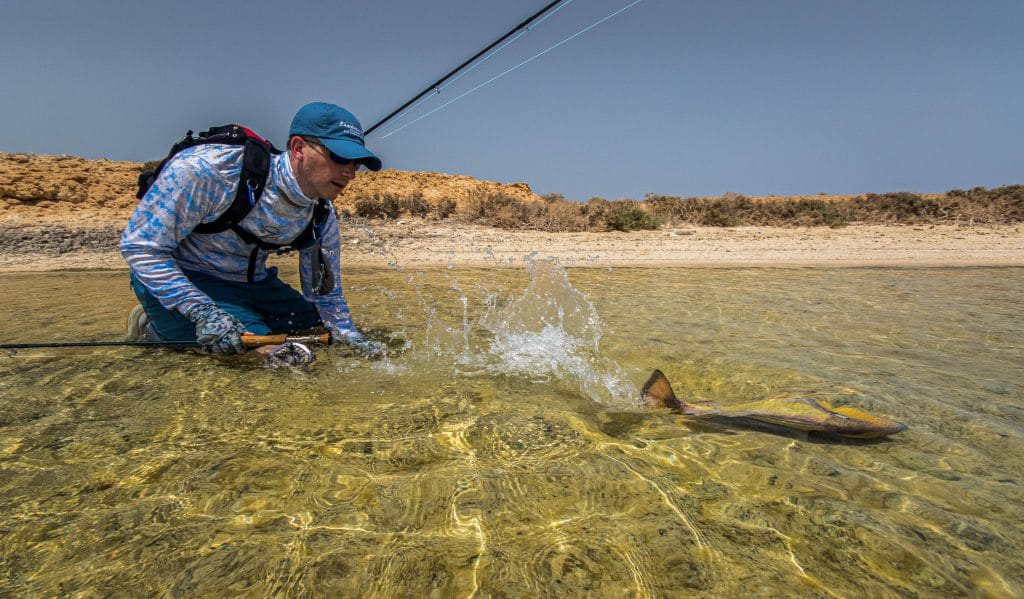
Once you have hooked him, if you have not caught one before you will be surprised how powerful they are and how dirty they fight. The can swim on their sides in shallow water and their first instinct is to head for deeper water and coral. This can be a depression on the flat or the reef edge. Either way it’s not going to end well if you let them! As always in coral areas keep the rod high during the battle, but apply as much side strain as possible to prevent it stuffing you in a hole. If this does happen it might not mean the end as I have fished with a number of dedicated guides who will pull out their goggles and go in after them. Even if they have locked the trigger by touching the second spine on the dorsal it’s possible to drop the mechanism and pull him out by the tail. Be warned, he is going to come out really angry and will bite anything presented.
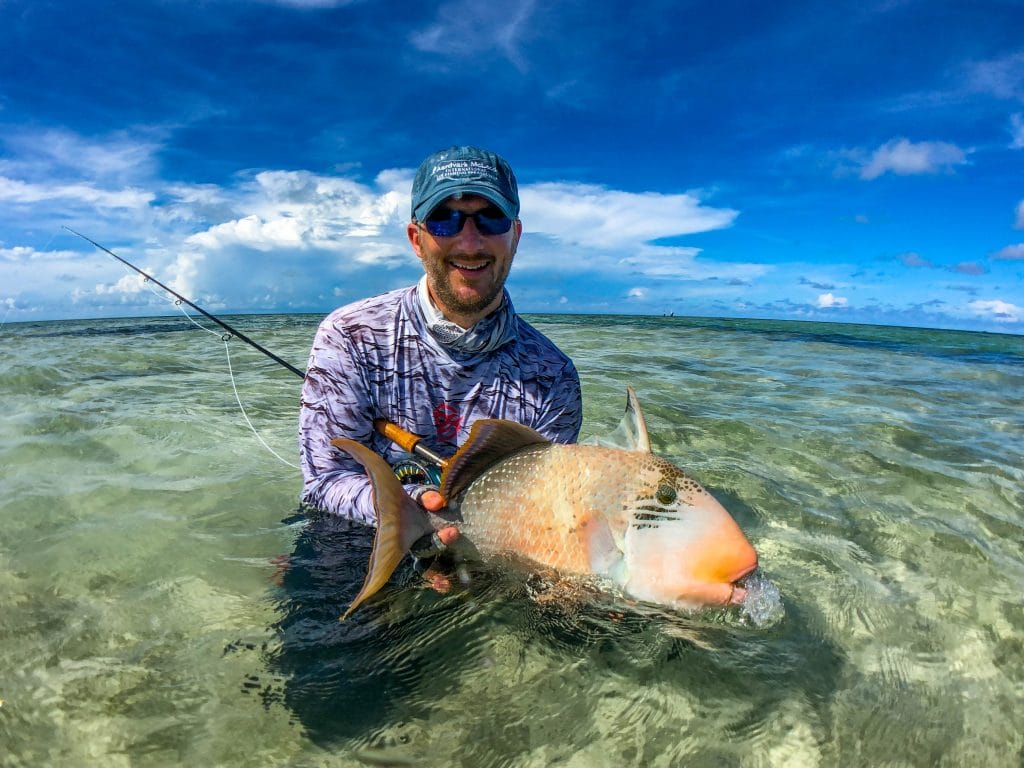
So where should you go to hunt for triggerfish? The prime spots are Christmas Island and the Seychelles. Some of the triggers on Christmas Island are the size of footballs and I have been smoked good and proper on its expansive flats. You will find them on all the atolls of the Indian Ocean and most guides in that area are well versed in fishing for them. Some of the very best trigger fishing in the world is on the Nubian flats of Sudan. Here with a nearly non-existent tidal fluctuation you will find large triggers (some massive) tailing across the flats. They are prime targets here, and ten shots in a session is not uncommon. You will also find grey triggers on nearly all the reefs of the Caribbean which have gone largely overlooked, except by a dedicated few, in favour of bonefish and permit. There are also some colossal specimens on the ocean side flats of Los Roques in Venezuela and really good numbers in the southern Bahamas such as Crooked and Acklins Island. Here they can be targeted on white sand which makes it particularly exciting.
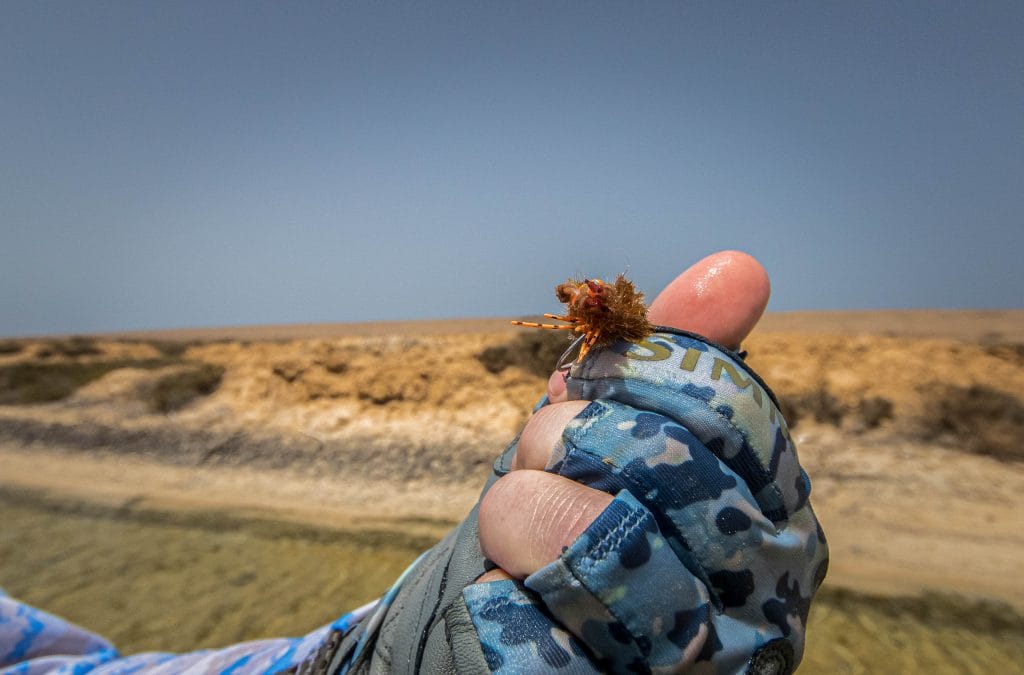
So the next time you are wading across a flat in search of bones, permit or GTs, and you see a waving trigger tail I would highly recommend you go and have a crack. The visual element and prolonged interaction is highly addictive and this is yet another species that can get under your skin. I have known many fishermen totally obsessed with them…. I am one of them.
For more information on catching triggerfish on the fly or going to the places you can target them please contact Peter McLeod or call our office on +44(0)1980 847 389.
About the author: Peter McLeod
Tailing Triggerfish Images – Johann Du Preez
